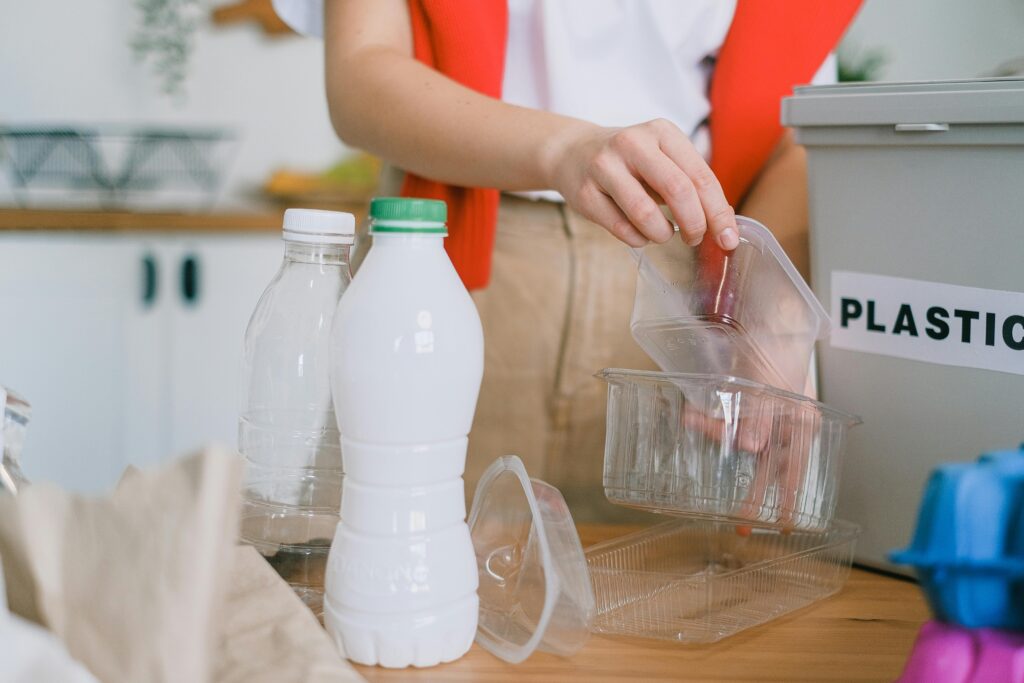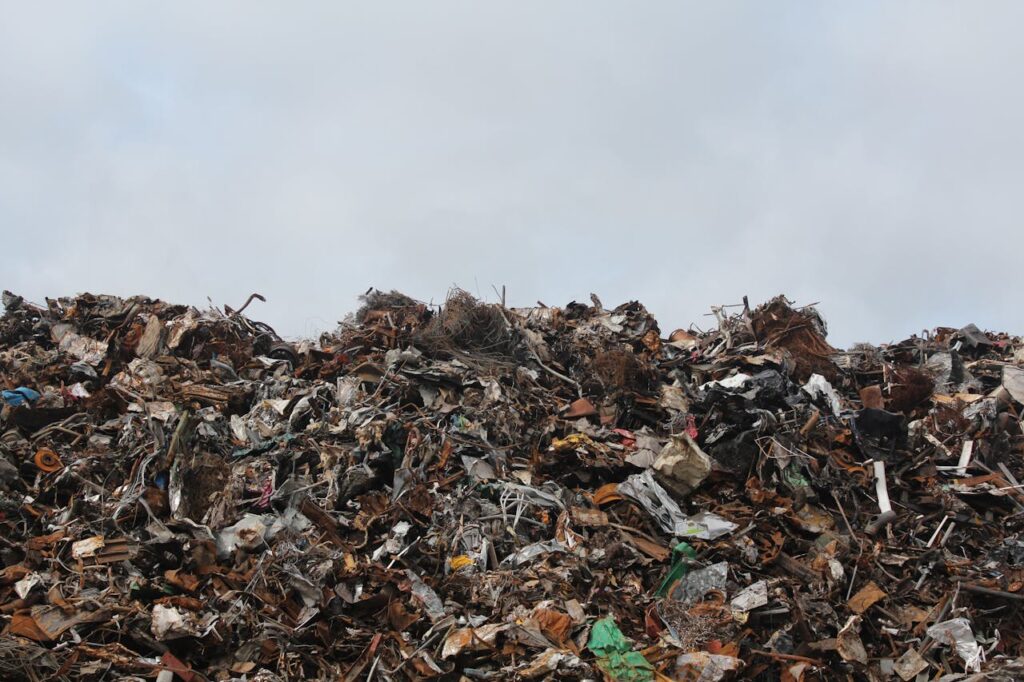Ikhlyas Waste to Energy innovations are the eco-friendly engine of the fourth industrial revolution
U.S. Inflation Reduction Act
The Inflation Reduction Act (IRA) of 2022, represents a significant legislative effort by the U.S. government to combat climate change, improve energy security, and promote economic resilience through significant investments in clean energy. The Act is intended to have a profound impact on the commercialization and deployment of clean energy technologies and save Americans money on their energy bills.
The plastic apocalypse is already here
Plastic is the most used material in the world. It is used in all areas of human activity and is the safest waste. Modern research proves that plastic waste is a silent killer. It is very dangerous not only to the environment but also to humans. Scientists from the University of California at Santa Barbara (USA) have estimated that since 1950, 9 billion tons of plastic have been produced. From 1950 to 2015, half of the plastic was made in the last 13 years. Two-thirds of plastic products are used only once. As of 2015, 6.3 billion tons of plastic were discarded. Of all plastic waste, only 9% is recycled, 12% is incinerated, and 79% accumulates in landfills and in the environment Today, 430 million tons of plastic are produced per year. By 2050, the amount of plastic in landfills and in nature will reach 12 billion tons, and in the ocean, it will weigh more than fish. We can’t leave it as it is. Efficient clean plastic waste management from Ikhlyas Waste to Energy can start to solve this problem on an industrial scale now.
Opportunities for plastic recycling industries
Plastic waste is categorized into three main groups according to the level of difficulty of recycling and disposal.
I. Polymers with good properties – 9%, they are clean, sorted and easily recyclable. Recycling can utilize 70-90% of such materials.
Waste during recycling is 0.9-2.7% of the amount of recycled material.
II. Polymers with medium properties – 18%, these are wastes containing a certain amount of contaminants and need sorting. Processing of these wastes involves additional costs for screening, washing, etc. 20-30% of the original amount of such raw materials is recycled.
The processing waste is 12.6-14.4% of the amount of recycled material.
III. Difficult to recycle polymers – 73%. These are heavily contaminated, mixed plastic wastes of single-use and packaging. They are the most hazardous to the environment and the most problematic for recycling and disposal. Only a small fraction of them are incinerated in incinerators, cement plants and steel mills.
Conclusion: It is not difficult to calculate that recyclers of recycled plastic into pellets, given their waste, can only recycle 11.7% of the total plastic waste.
The high plastic recycling rates of some countries are obtained by exporting waste to other countries and incinerating it.
Opportunities of Ikhlyas Waste to Energy
• According to the UN data, non-liquid mixed waste PE, PP, HDPE, LDPE, make up from 49 to 51%, they are utilized 100% and on an industrial scale.
• Technological process of utilization, does not have a negative impact on the environment and human health.
• Production safety of utilizing equipment and small occupied production area;
• There are no technological obstacles such as: thermodenomical incompatibility, ideal purity of raw materials and waste of poisonous fractions;
• Energy independence and self-sufficiency of plants;
• Gives inexhaustible opportunities for clean energy and its long-term storage;
• Significantly reduces the carbon footprint and harmful emissions, for any energy intensive enterprises using “clean RDF fuel”;
• Keeps the territory of the state from being contaminated and lost forever;
It is the energy foundation of the circular economy.
Conclusion: Ikhlyas Waste to Energy can irretrievably and very efficiently recycle 50% of the total amount of plastic waste and produce clean, high energy products, according to the formula 1 kg – 1 liter – 5 kW of energy, ready for use.
You can read all the advantages of Ikhlyas Waste to Energy by downloading our PitchDeck.
Raw materials used by plastic pelletizers
Plastic particles are the main raw material for the plastics processing and extrusion industry. Secondary particles go through a long series of very energy-consuming processing steps and eventually, when added from 1 to 5% to 99-95% of new pellets, are transformed into various plastic products: packaging materials, building materials, wire insulators, etc.
The production of plastic pellets, first of all, requires the selection of quality and very pure mono raw materials, because it directly affects the characteristics of the final product. Commonly used plastic raw materials include PET, polyethylene, polyethylene, polypropylene, polyvinyl chloride, etc. The selection of raw materials should be based on the characterization requirements of the desired product. Pre-processing steps typically include hot washing and shredding of raw materials to ensure that the purity and particle size of the raw materials meet production requirements.
The production of secondary pellets, does not eliminate landfills from their waste supply, but instead increases their supply. When added to new pellets, the quality of the plastic, and therefore the product, deteriorates. Products made of such raw materials become brittle and brittle much faster, and this increases their arrival at landfills.
The production of secondary pellets requires huge energy inputs, which increases the amount of greenhouse gas emissions into the atmosphere many times over.
Raw materials of Ikhlyas Waste to Energy
The input raw materials for Ikhlyas-Waste to Energy plants are polymer waste, the recycling of which is impossible and in most cases not profitable. They are partly incinerated in cement and incineration plants and are the most dangerous for the environment.These are mixed plastic waste from any household and industrial products, including single-use, labelled PE, PP, HDPE, LDPE, namely: all kinds of bags and film, stretch film, tubes from toothpaste, creams, ointments, etc.; toothbrushes; soft packaging (“doy-pak” from mayonnaise and sauces, pasta, cereals, cocktail tubes, candy wrappers, vacuum packaging, shrink film and labels from PET bottles); multi-component packaging; foil packaging shiny inside (from crisps, coffee, ice-cream, candy, stickers and others), polyethylene from tetra-pak packaging; plastic medical waste (disposable syringes, containers from medicines, shoe covers, medical masks, gowns, sheets, head covers and other products made of non-woven polypropylene fibre); files for documents, plastic folders; sanitary pipes; black and construction film; washed containers from plant protection products (bags, big bags, canisters of any capacity), film for covering greenhouses, field beds and others.
It is impossible to list the whole list of raw materials, but we can generalise. This is packaging, which, according to the UN, accounts for 2/3 of the total amount of plastic waste due to its widespread use and utilisation.
QUESTIONS?
If you would like to learn more about our technology program, technology, capabilities and equipment purchase terms and conditions, click on this button.




